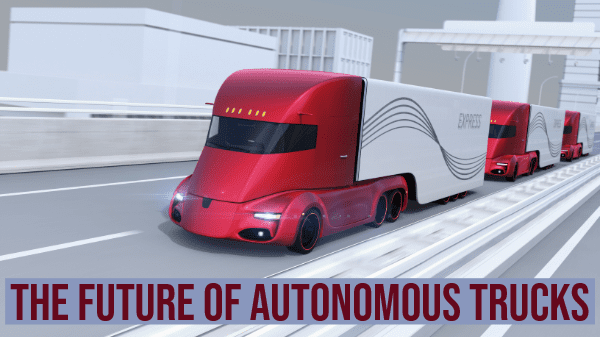Michael Miqueli, owner and president of North Bergen, NJ-based San Antonio Broker Services, Inc. BB #:197829 said the role of drivers will need to be redefined, perhaps through an entirely new classification, created for those who “just sit behind the wheel and monitor the truck.”
Such an addition would probably take years to gain regulatory approval. An added complication is implementation of new entry-level driver training requirements, which go into effect in February.
As the final rule of 2016 regulatory overhaul by the Federal Motor Carrier Safety Administration, minimum training requirements have been substantially expanded and will be standardized across the industry. This includes certified commercial driver training centers and carriers’ in-house driving programs—many fear the new requirements will aggravate the driver shortage.
Prepping and Platooning
Hence autonomous trucking making even more sense. The North American Council for Freight Efficiency has its own snapshot of the future: the first step revolves around putting new technology in trucks, which is already in full force, followed by platooning, then “assisted driving,” and finally, fully autonomous trucking.
A December report from global management consulting firm McKinsey & Company dives a little deeper, seeing autonomous trucking in four distinct phases: platooning with a driver in each truck from now until 2020; a driver in just the first platooning truck in 2022 to 2025; drivers for pickup and delivery only from 2025 to 2027; and fully driverless trucks—both platoons and individually—from 2027 onward.
Significant advances are being made across the country, with more states updating regulations to allow for the testing and eventual adoption of autonomous trucking.
According to Peloton Technology, a pioneer in truck platooning based in Mountain View, CA, commercial deployment was approved in eighteen states at the end of last year, with another eight states running tests.
Platooning continues to gain favor as a way to use autonomous trucks on highways. Results so far have shown the reduced wind resistance, linked acceleration, and tandem braking do have a positive impact on fuel savings, while the ability to have two or three trucks together for loading and unloading can maximize productivity.
For many, the pros of this brave new world are pretty straightforward: savings in fuel efficiency and labor, as well as claims of less congestion on roads due to synchronization, and improved safety by removing human error. The cons are a different story and still far outnumber the purported benefits, including acceptance by both shippers and the public, system security and reliability, legislative challenges, legalities and litigation, and return on investment for high implementation costs.
Another thought involves whether transportation companies would consider joining forces to defray costs for high-tech trucks and/or platooning, sharing assets to maximize capacity. Amazon Flex and other companies are already diving into these supply-and-demand-matching platforms according to McKinsey & Company.
Jimmy DeMatteis, president of Des Moines Truck Brokers, Inc. BB #:108946 in Des Moines, IA, doesn’t see autonomous trucking affecting brokers until they become mainstream rather than a novelty.
But Steve Viscelli, a sociologist at the University of Pennsylvania who studies work, labor markets, and public policy related to freight transportation, automation, and energy, thinks services like Uber Freight, which matches carriers with shippers, will affect brokers in the near term.
“I think it’ll have a big impact on what is paid for shipping,” Viscelli said, and “that’s a big story.”
Harriet Mills, who handles public relations for Choptank Transport, Inc. in Preston, MD, BB #:168125 agrees there may be many obstacles to overcome before autonomous trucking is an everyday reality, and yes, cost and cargo will certainly be an issue.
“It such an expensive proposition,” she said, with many variables to work out. Nevertheless, “It’s exciting.”



